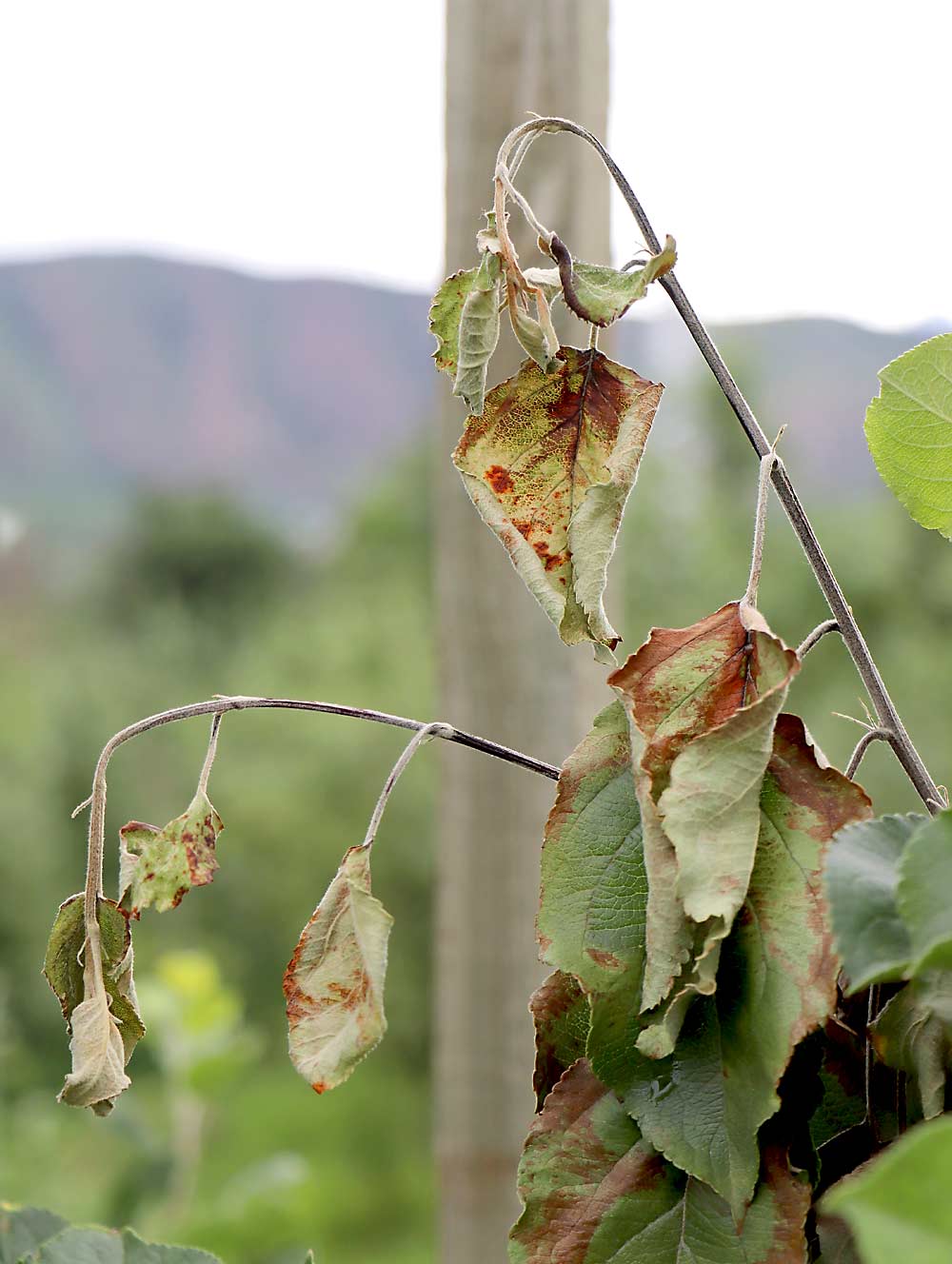
Don’t let Illinois fool you.
Frank Zhao knows apples and, specifically, fire blight.
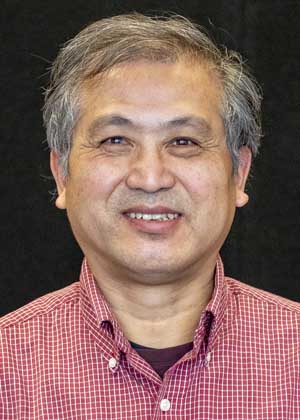
Zhao, Washington State University’s newest tree fruit endowed chair, has researched fire blight in apples and pears for the past 18 years, despite his previous position at the University of Illinois, a state not known for pome fruit production. He’s even worked with samples from Washington growers.
But his work has been mostly in the laboratory. Here in Washington, he plans to interact more with growers; one of his first requests is for growers to send him samples of infected plant tissue that he can screen for antibiotic resistance.
Fire blight has long been a concern for Washington pear growers, but the bacterial disease seems to be affecting apples more in the past 15 years, with the rise of new varieties and rootstocks, high-density plantings and a string of warm, wet weather during bloom.
Outbreaks caused serious damage in 5–10 percent of orchards for four years in a row, from 2015–2018, according to WSU data. About 17 percent of apple acres in Washington and 88 percent of pear acres were affected in 2018, with a combined estimated $37 million in direct losses, according to a 2018 survey, said Tianna DuPont, a WSU tree fruit extension specialist.
Zhao has been involved with multiple Specialty Crop Research Initiative grants regarding fire blightand is currently part of a $5.2 million nationwide project regarding virulence, genotyping and genomics. Researchers from Washington, California, New York, North Carolina and Oregon are also participating.
In Washington, Zhao’s work will be partially funded by the tree fruit industry’s $32 million endowment, the largest single gift to the university in its history, funded by grower assessments. Among other things, it promised to pay for the activities of six endowed chairs. Stefano Musacchi, Lee Kalcsits and Carolina Torres of the Wenatchee Tree Fruit Research Center are three of them, specializing, respectively, in physiology, environmental management and postharvest management.
Last year, the endowment’s industry advisors asked the university to pursue a bacterial pathologist — Zhao. This year, the university aims to hire an entomology chair, with a soil science chair to follow in 2023 or later.
Research goals
Zhao began at WSU in January, setting up a laboratory at WSU’s Irrigated Agriculture Research and Extension Center in Prosser. His primary research questions involve determining how much Washington’s Erwinia amylovora — the bacteria that causes fire blight — has developed resistance to the industry’s antibiotic treatments and also identifying the most prevalent genetic strains of the pathogen.
Surveys conducted in 2018 indicate that about 75 percent of Washington apple and pear growers don’t know if the fire blight in their orchards is resistant to streptomycin, a commonly used antibiotic that has been under resistance pressure since 1975, he said. The Washington industry also uses kasugamycin and oxytetracycline. So far, the state has not seen evidence of resistance to those. However, Zhao’s team intends to screen for it. California growers have erwinia populations showing resistance to oxytetracycline and streptomycin.
“This is really serious, because … these are two major tools we have to control blossom blight,” he said.
The good news: California has a history of resistance dropping after periods of reduced antibiotic use.
As for the genetic strains, Zhao said researchers, up until recently, assumed Erwinia amylovora was uniform. That’s still partly true. The genetic code is quite similar in all populations, but the pathogen has some inverted DNA that has given rise to at least 10 unique genotypes; so far, four are known in Washington.
“The first thing we probably want to do is look at the population diversity in Washington to see which one actually contributed to the epidemic in Washington in the last few years,” Zhao said.
Identifying the most prevalent strain is not just a matter of academic curiosity. The information could help show how the pathogen moves within a tree and, therefore, inform practical horticultural decisions, namely how to prevent the disease and how “deep” to cut when removing infected tissue. Currently, WSU advises cutting at least 12–18 inches below the point of visible infection.
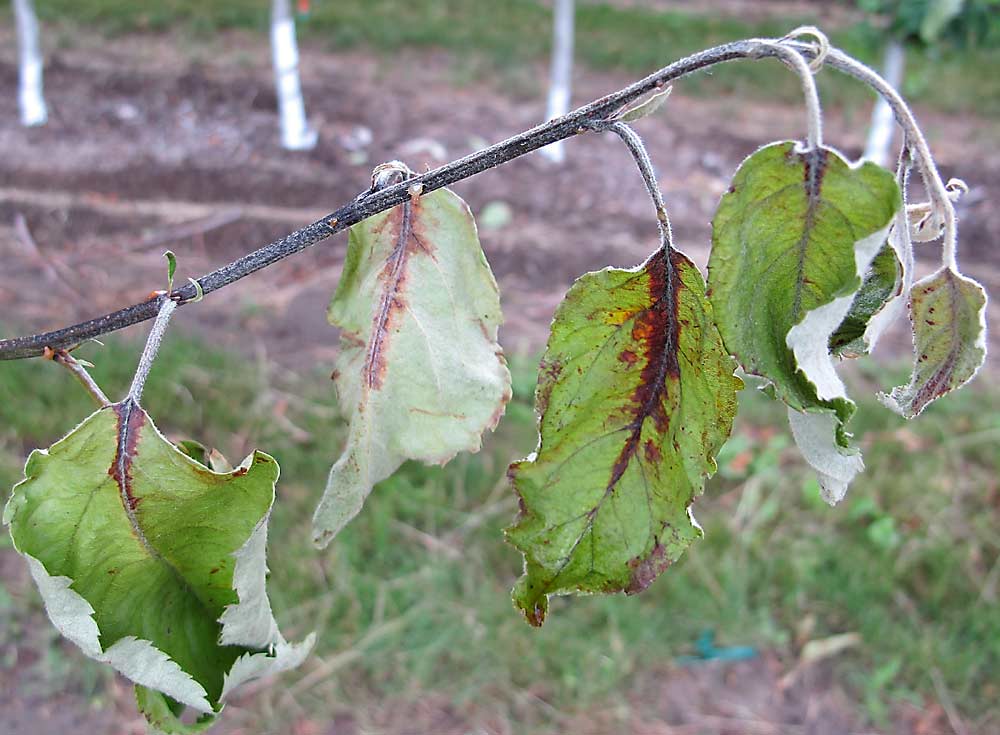
Over the past several years, fire blight has grown from a nuisance to an economic problem, especially in young, high-density apple orchards, said Sean Gilbert, president of Gilbert Orchards in Yakima and a member of the endowment advisory board.
Most growers admit resistance is a problem but would not necessarily know their own levels, because they sometimes mix substances and other control techniques, Gilbert said. He also agrees that the industry needs to learn more about how, when and how quickly the pathogen moves within a tree under different conditions, something Zhao’s genetic work may answer.
However, Gilbert primarily hopes Zhao’s research leads to an industry consensus on how to prevent fire blight. By the time crews cut diseased branches, it’s already costing money.
“You’re managing a car crash at that point,” he said.
Zhao also will research other diseases, including cherry bacterial canker, though he admittedly has little experience with sweet cherries. He has studied pseudomonas, a diverse group of bacteria, including strains responsible for tomato and soybean diseases similar in genetic structure to the strain that infects sweet cherries. He spoke about bacterial canker at the annual Cherry Institute in Yakima in January — four days after he started work in Washington.
Zhao also hopes to assist the state’s response to X disease, a widespread threat often referred to under the umbrella term “little cherry disease.” X disease is caused by a phytoplasma, a bacterium.
Zhao lives in Richland with his wife. They have one adult son, a medical doctor in Chicago.
Frank Zhao, the Washington State University endowed chair for tree fruit plant pathology, wants growers to send him samples of fire blight-infected apples and pears for free screening for resistance to antibiotics. He will share the results with growers, probably within a week or two of receiving samples, but the data will also inform his research.
To participate, collect samples from shoots, flowers and leaves with obvious fire blight symptoms and place them in a plastic zip bag. Store and ship the bags with ice packs if possible. Record the date, location, variety and history of antibiotic use in the block. Ship to WSU-IAREC, 24106 N. Bunn Road, Prosser, Washington 99350.
Zhao can be reached at Youfu.zhao@wsu.edu.
—by Ross Courtney

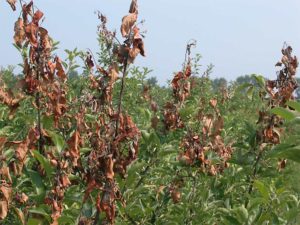
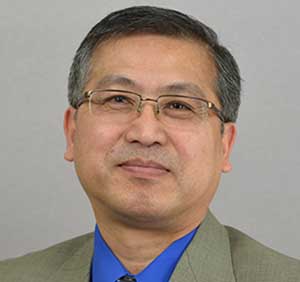





Leave A Comment